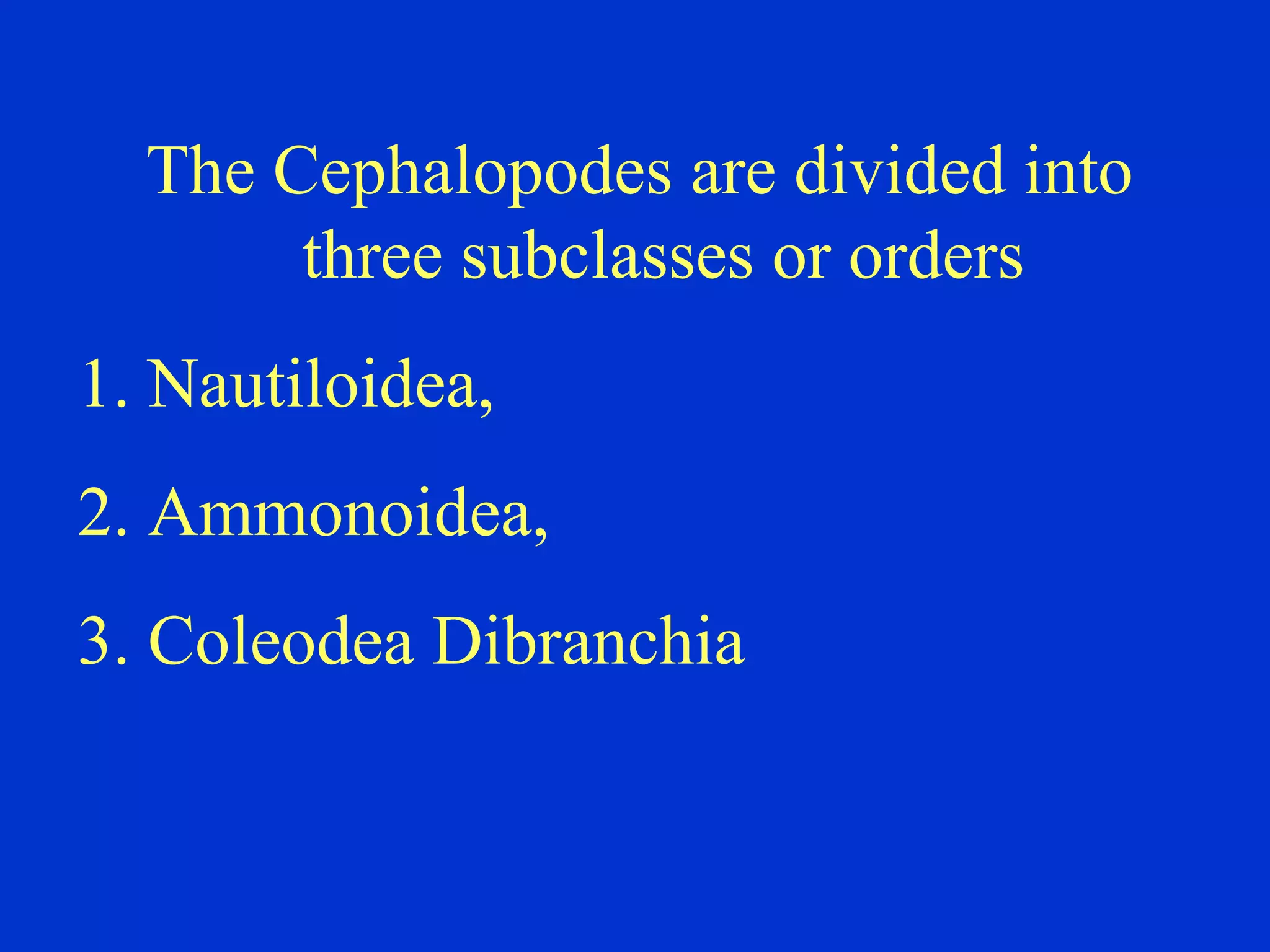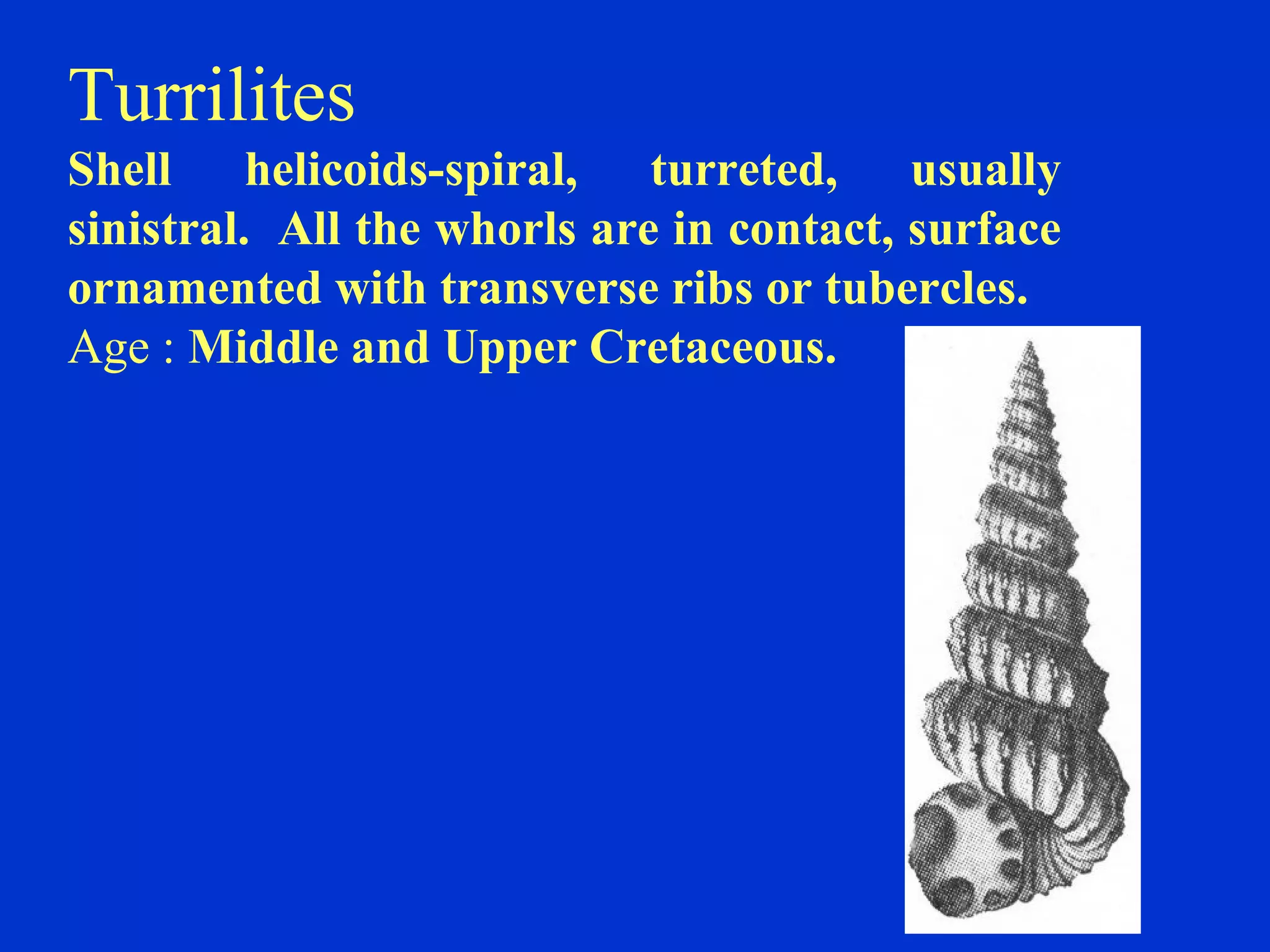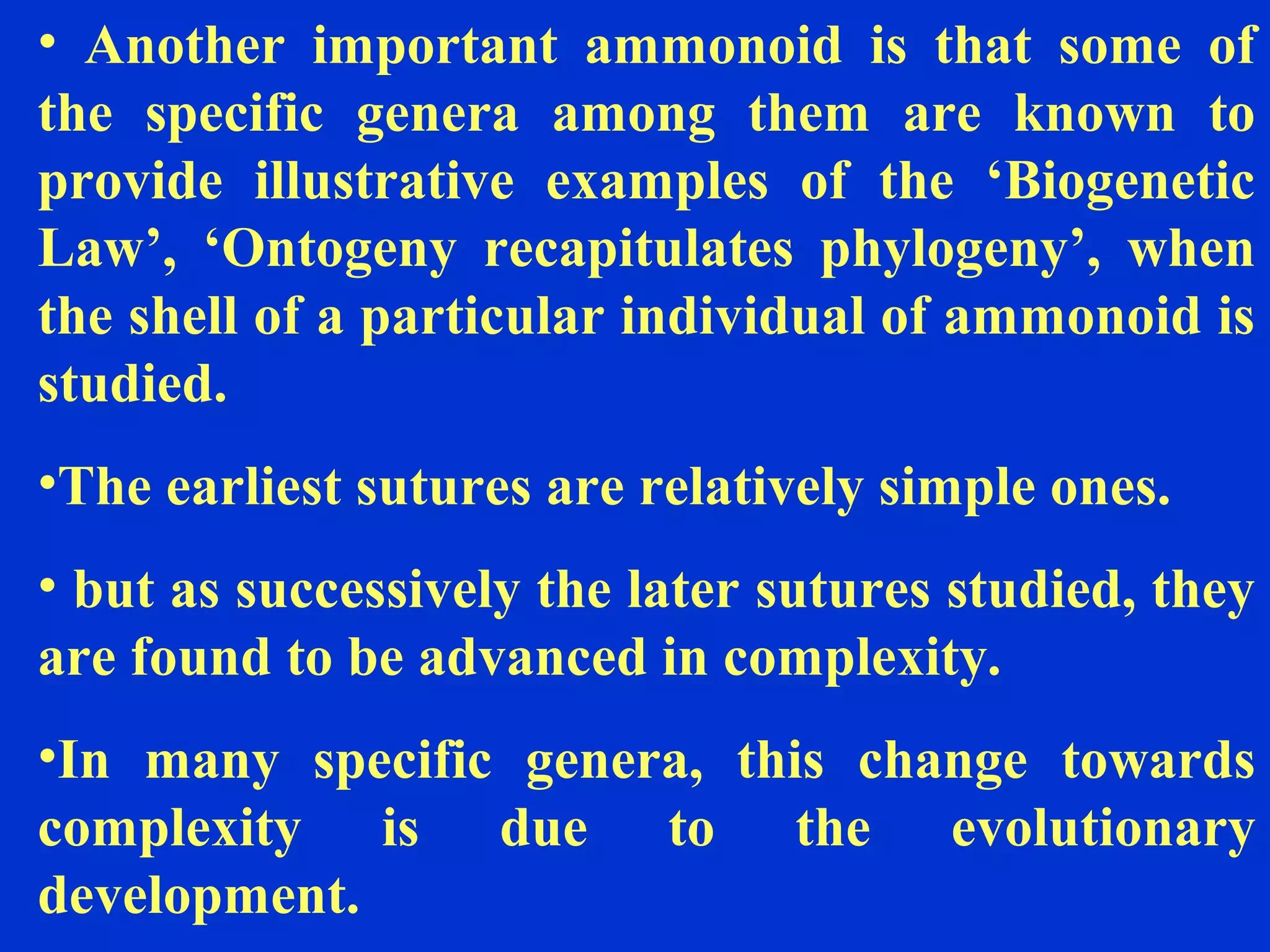This document provides information about the class Cephalopoda. It discusses key characteristics of cephalopods such as their highly developed sensory organs and efficient locomotion. It describes the major orders of cephalopods - Nautiloidea, Ammonoidea, and Coleoidea Dibranchia. For each order, it summarizes representative genera including their defining anatomical features and geological time periods. The document is an overview of cephalopod diversity and the use of ammonoids in particular as index fossils for dating rock layers.















































